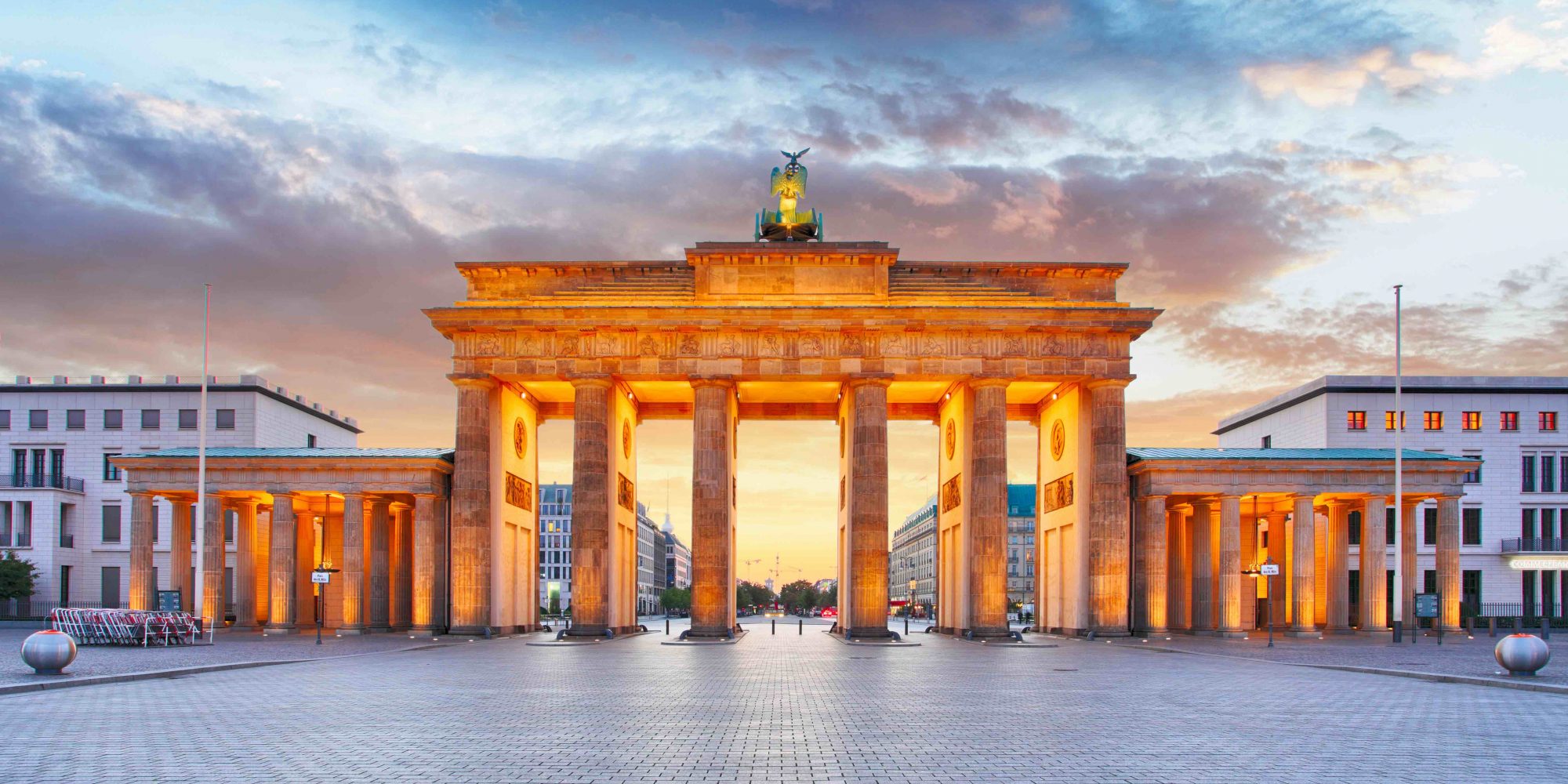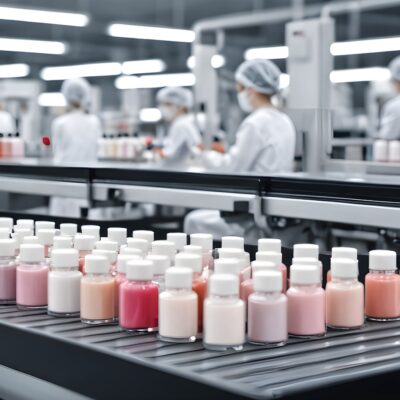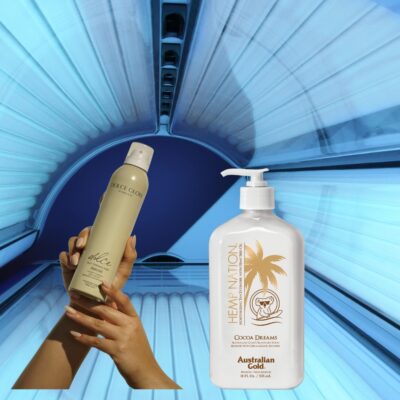
Indie Beauty Brand Founders Share What They Consider When Expanding Abroad
In this edition of Beauty Independent’s ongoing series posing questions to beauty entrepreneurs, we ask 17 brand founders and executives: When breaking into a market like Germany, what strategies do you pursue to attract new customers?
- Janet Hayward Founder, Ipsum Skin
I am an expat Brit who has been living in Australia for the past 23 years. So, when I created my brand, one of my intentions was to take it into Europe and the U.K. For this reason, it was important that I achieved COSMOS organic certification, which is recognized in these countries.
Even though I have a good personal understanding of these markets, I still think it is absolutely necessary to carry out thorough research into the key trends that are making their marks and what actual product categories have the most traction among consumers in the European and U.K. markets.
You can get some of this information from trade magazines, but one of the best ways to gain this knowledge is to participate in trade shows. To have the opportunity to meet buyers, retailers, media, other brands and consumers face to face is invaluable in learning the local markets and making important contacts.
It also offers insight into how local consumers discover their beauty brands, whether they read magazines or prefer Instagrammers'/bloggers' advice. Are they avid online shoppers or do they prefer to go into a perfumery or department store to actually experience the product? It is surprising how this differs from country to country and, without this information, it's more difficult to find the best way to attract new customers.
- Maria Burwood Founder and CEO, MyTime Minerals
More than being an emerging market, Germany, the U.K., U.S. and Australia are all bound by different legislative requirements when it comes to selling cosmetic goods. Before I decided to launch outside of Australia, I took time to research the different requirements when it came to labels, certification and even pricing.
It became evident very quickly that the most efficient way for me to launch my brand in the overseas markets was to have a label and marketing approach that unilaterally satisfied as much of the global cosmetic requirements as possible. For that reason, I had all my product labels redesigned to comply with the major four countries I wanted to target.
In terms of strategy, we decided as a team that the best approach would be to launch through a trade show like Indie Beauty Expo. It hits all major requirements: media, public brand awareness, wholesale/buyer brand awareness, and the opportunity to make new networks and connections with other like-minded brands in the same boat.
Coming from a science background, I personally lay a lot of emphasis on launching ideas or products in a public arena. You open yourself up to the good and the bad, but it gives you a very quick perspective and knowledge of what your target market is, what they really want, and what product is the hero SKU in that country.
- JoAnn Fowler Founder, Sappho New Paradigm
Our main consideration is always ingredients So, our process began and continues with EU formula certification. The process of certification has in turn raised considerations of both style and legal information that has to be communicated via visuals, information, packaging, claims, etc. We are working with a Berlin design team. So, the need for design changes for EU registration became pivotal as we adjust and uplift our outsides to meet our insides.
Our journey as we come to Berlin where it concerns our packaging and marketing collateral has been one respectful of a European aesthetic, but also a conversation, in color, of our Canadian heritage. We take part in the Indie Beauty Expo trade shows as we feel it is a great way for our company to organically grow globally.
- Sabina King Founder, Hempure CBD
At this point, the regulations of exporting and importing CBD and hemp-based products are unclear. The 2018 Farm bill has made them federally legal, but, for other countries, including some states in the U.S., there is still confusion and discussion. The governmental authorities are not being clear on their acceptance of these products, but they are also not banning them either.
- Moe Kittaneh Co-Founder, Herbal Dynamics Beauty
Social media is of the utmost importance in our plans when entering new markets and launching new products. Ahead of IBE Berlin, for example, we started a regional social media campaign to reach out to influencers, get feedback and start introducing people to Herbal Dynamics Beauty with advertising and PR outreach across Europe. We really try to learn about what the new market wants, and reach people on a personal basis through our social communities.
- Valerie Obaze Founder and CEO, R&R Luxury
My first step is to research the market trends and create a customer profile. That way, we can tailor our marketing to this new potential customer. Social media is one of the main marketing tools we use, and it’s a great way to build communities and a buzz around our brand.
Helpful tools on Instagram such as sponsored posts allow us to specifically target potential new customers in a particular country, demographic, and those that have an interest in natural products, for example. We always make sure our social media pages look good and include the right information. When the new customer comes to our page, they know exactly how to find out more information and make a purchase.
- Maximilian Schnorr Founder, LediBelle
I think Germany is an almost saturated market. Beauty retailers only seem to compete on price, using every occasion like Black Friday, Valentine’s Day, Single’s Day or Women’s Day as an excuse to do another 20%-off price promotion. Shoppers have learned the [discount mentality], (in Germany, you call it, "geiz ist geil mentalität,") so the majority of sales are on deal.
For indie brands, this is a challenge because the brand, the product, the benefits or the story aren't the focus. If you compete on price, somebody else will always be cheaper than you. Indie brands need to stay away from the temptation of short-term volume gains, but find a way to convince consumers about their superior value equation because there are many more items in the numerator like being clean, natural, socially-beneficial or sustainable that justify a higher price.
- Daniela Schweingruber Founder, Nooii Skincare
Like me, German customers are very aware of climate change and microplastics in skincare products. Offering products which are eco-friendly, clean and sustainable is a must for Germany. But I think it is important that, wherever you are, you have to be able to stand behind your product and be sure it is a gain for each customer.
- Kathy Chou CEO, Selfkaire
When breaking into emerging markets, it's especially important to make sure your product, brand mission/message and packaging are in line with the culture and aesthetic of the market in consideration.
Compared to developed markets, which are more receptive to unknown innovations and have audiences with a wider range of preferences, emerging markets are smaller in comparison, have less variability and focus on current trends within their own country. There may not be as many trends and the trends may have been taken from a leading innovator country with a significant time lapse.
Additionally, you should research what the most efficient medium for marketing is (celebrity endorsements, different social media platforms, etc.). If your product does not fit ideally in the current or near-future market, I would consider picking a new market to launch into.
- EVELYNE NYAIRO Founder, Ellie Bianca
When entering a new market, the following key aspects must be addressed in your market-entry strategy: regulatory requirements, direct selling or via distributor, trademark registration, internal and external resources, marketing strategy, and market competitive analysis.
We have begun export plans for international markets and each region has different demands and regulations. Ellie Bianca is quickly expanding, and growth comes with its challenges. Detailed market research must be done prior to entering a new market. Gathering data, partnering with experienced sources in the prospective market and narrowing the target demographics helps with goals and objectives when looking to expand.
Visiting each area through trade shows and events has been beneficial in determining if Ellie Bianca is a good fit or if the market is ready for the brand. Exhibiting at key conferences and trade shows has allowed us to make connections with people in the industry to understand what buyers are looking for.
Analyzing the competition and how other international brands have launched is also a method to get acquainted with a new market. Reaching out to online influencers and getting people to talk about the brand is a strategy we have used to increase brand awareness and create buzz.
Selecting the right partnerships can be a huge advantage. It starts with determining if you will sell direct or via a distributor. Leveraging the influencer community and reach through collaborative marketing campaigns can be measured and duplicated to boost brand presence. Through market research and testing to see what people are attracted to, we can adjust the marketing material to suit the target market, for example, with the types of words used, styles of images, packaging, and the ethnic backgrounds of people portrayed in ads.
- Dorita Redelinghuys Founder, Skinesiology Skincare
The most honest way to answer these questions is to enlighten you about how we manage our journey and decision making. Skinesiology skincare is a vibrational skincare range, so every aspect of the business is managed through incorporating these principles. My 20-plus years of experience as a practicing kinesiologist has given me the confidence and belief to use energy balancing to support our direction and decision-making processes. Being able to read the energy patterns creates a better understanding of how and where to move forward. It has been invaluable when it comes to the finer detail and what path not to follow.
It is extremely challenging to break into a new market, especially if you have a product that will disrupt the market. It is saturated with many new entrants and options. This is where you need to give yourself the gift of time/patience, and acknowledge your determination and bravery. Working with achieving your high ideals, it is necessary to acknowledge your accomplishments as this restores the energy flow. With this in balance, it is easier to tap into perseverance, persistence and to put in the hard work.
Packaging in terms of look and feel is essential as it shows the character of the product. Try and give your product’s packaging a character or personify it. Be clear on the essence of your product. Multiple benefits are confusing to the consumer, so take time to find the single essence for your product’s existence. Be very consistent with your message.
Partner yourself and your company with people that resonate at the same vibration (values) as you do. Aligning yourself with true helpers who support your essence is an invaluable asset to your brand and also serves as ongoing motivation and support. Find your target market and aim straight!
The last 10% takes extremely long to fall into place and patience is a critical part of this process. Remember the bigger picture and launch when you are satisfied with everything. Create long-term goals and be clear about them. If you have the belief and a solid product or service, then the market will respond. Long-term goals help in not overreacting to different responses that can become costly and time-consuming.
Be true to yourself, and you will attract people (consumers/buyers) with the right intentions. Don’t force places and people. There are opportunities all around you.
- Cecilia C Nilsson and Johanna Lindskoug Founders and CEO, BRUN Products
We are already entering a lot of European markets, mainly because our brand has won so many prizes, including the Short List Beauty Awards, so we have a good reputation and lots of retailers are contacting us. However, we try to be picky and choose our retailers little by little to learn on our way. Germans are very different than the Spanish, both as retailers and customers. The Asians are a lot different to Europeans, etc.
To the retailers, we offer a retailer starter kit to see how committed they are to natural beauty products. Natural retailers have a great opportunity to educate, not just about health and beauty, but also to tell our story and about our social and environmental impact. Our Test, Learn and Educate kit is a way for our future retailers to tell us who they are and how we together can work to create a just sustainable future. We believe that retailers and brands are better together!
- DANUTA DUDEK Founder, Cotarde
Most important is to get to know the key people that know the market: distribution on one side, communication clues on the other. These potential partners must be attracted to the brand. It takes time to find the right team and differs between the regions. Trade shows definitely help.
- Max von Troschke Managing Partner, skin689
One of the specifics of the German market are the strong independent perfume retailers, sometimes regional setups with more than 50 doors, but often one door only. They typically have an attractive clientele, offer strong customer service (including consultation) and they love indie brands as a means to differentiate themselves, also from the prevailing discount game.
We focus on these independent retailers, and started building distribution from the top with the most renowned doors (many of them are in the "first in beauty" network, a rather loose procurement and marketing cooperation). As "lighthouses" they help us to gradually broaden our footprint, remaining with the independents, but expanding to premium regional players with some more doors.
Most of the independents are part of the "Beauty Alliance" network, with some good marketing tools to build awareness with retailers and consumers. Traditional print advertising in high quality high volume titles such as Bunte helped us building distribution here.
In addition to perfume retailers, we work with beauty clinics and doctors for distribution of our products, but also for communication purposes (e.g. expert interviews in the press). These two channels work well in parallel. As a strategic choice we do not sell our products via pure online retailers in Germany, and most other markets.
- Luisa Wiesche Founder and Business Director, DE LILOU
We actually consider the German market a mature one in terms of Europe, but with plenty of opportunities, especially for indie brands. Germany is the cradle of natural cosmetics, and German brands like ours strive for quality, performance, clean and nontoxic ingredients, and excellence in manufacturing with a great deal of attention to details.
Local upcoming trade shows are a super opportunity to attract press, retailers and new customers. Cooperation with German influencers and partnerships with other local brands are also good strategies to reach out to new clients.
- NIMA JALALI Founder, Salt & Stone
We have the most amazing distributor and sales agents in Europe. We really didn’t do much to shift our marketing, but our distributor does seed the product out to some key athletes and influencers.
- Christinah Nicolaisen Co-Founder, Eleni & Chris
When considering a new market we always look at the competitive landscape to ensure we have an overview of what the current offering is within our category.
We always start working with PR before we launch, as we found that we get really valuable insight and feedback from the media that makes it easier to adjust messaging and tone of voice to the local market.
If you have a question you’d like Beauty Independent to ask beauty entrepreneurs, please send it to editor@beautyindependent.com.






Leave a Reply
You must be logged in to post a comment.